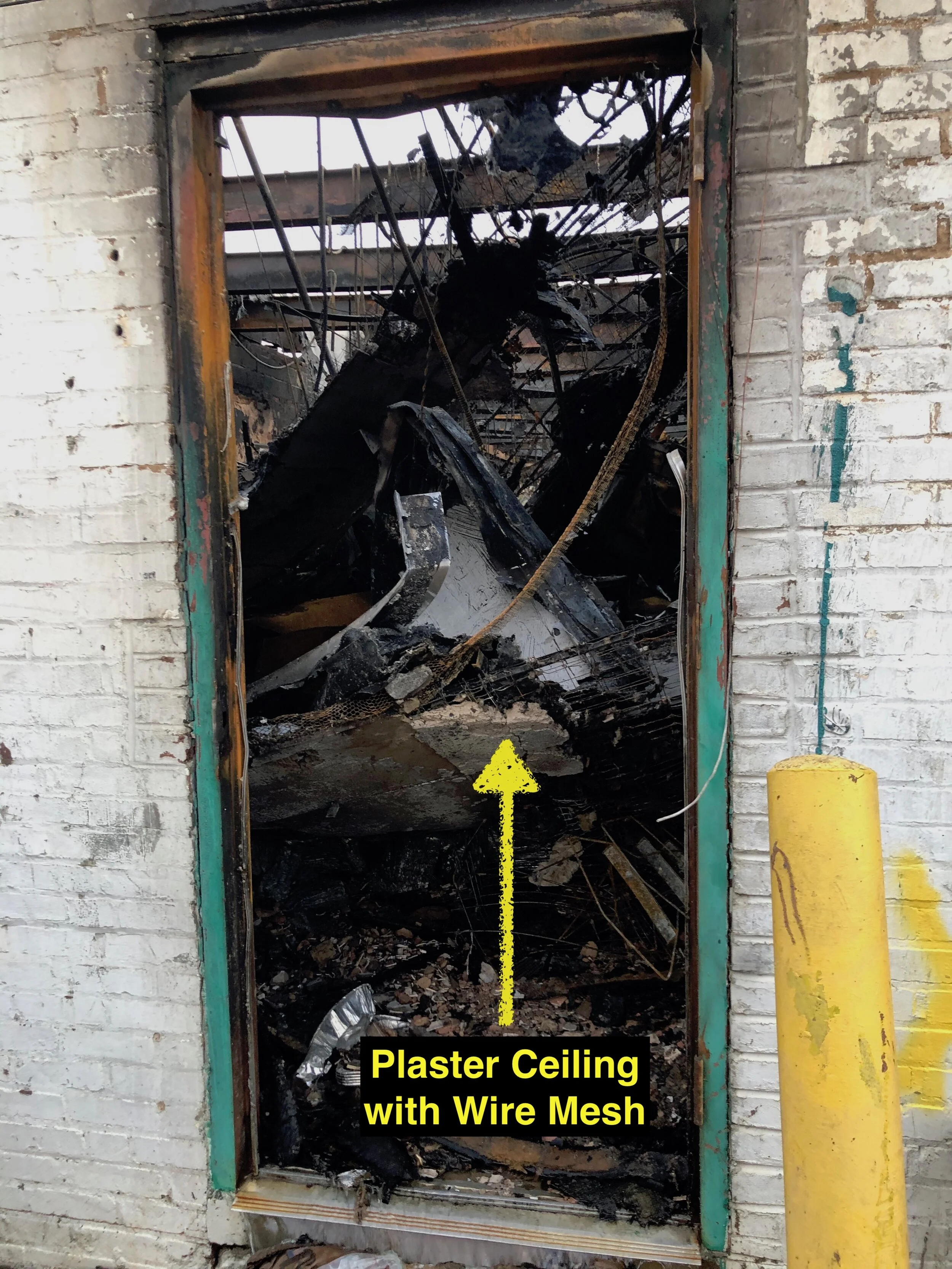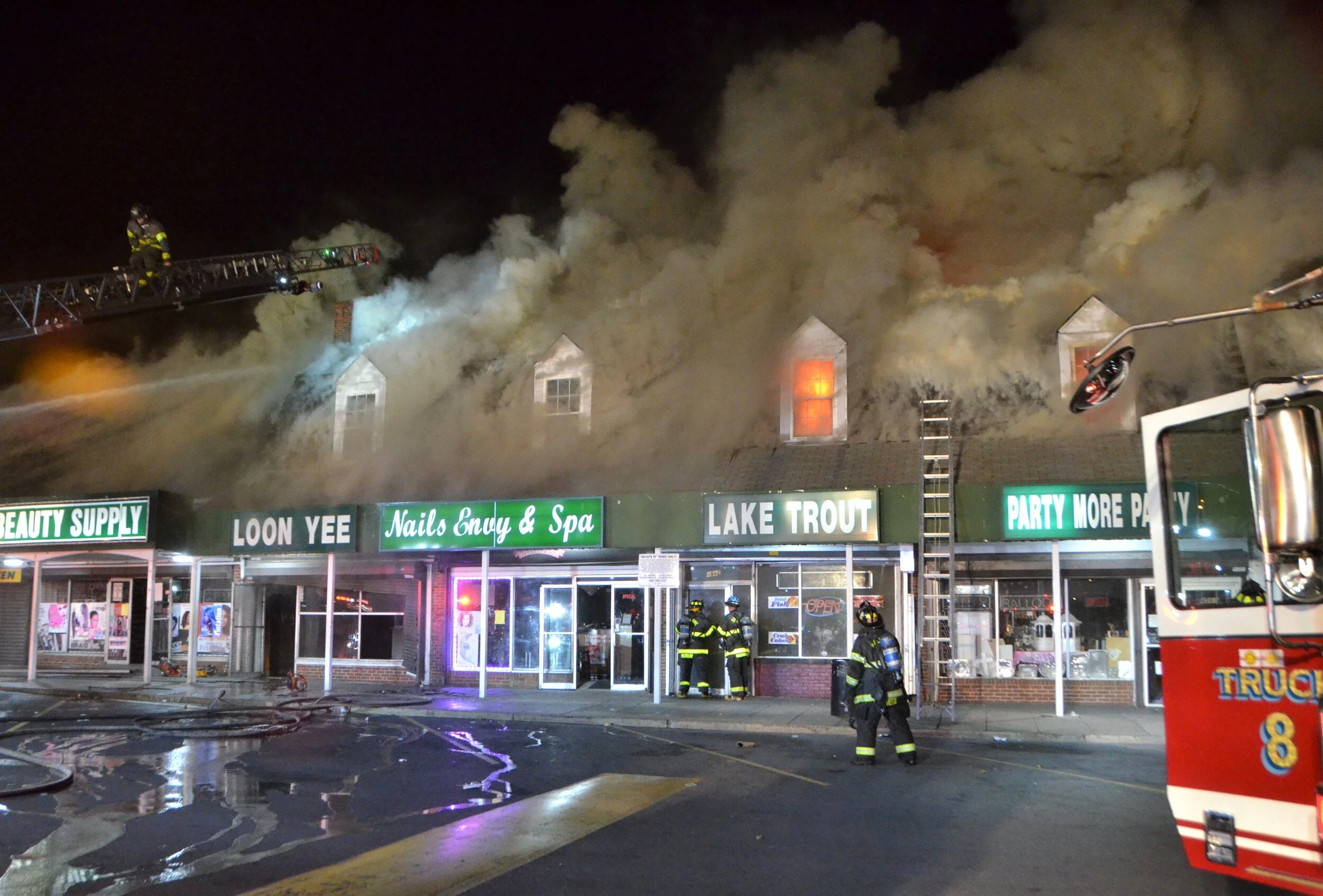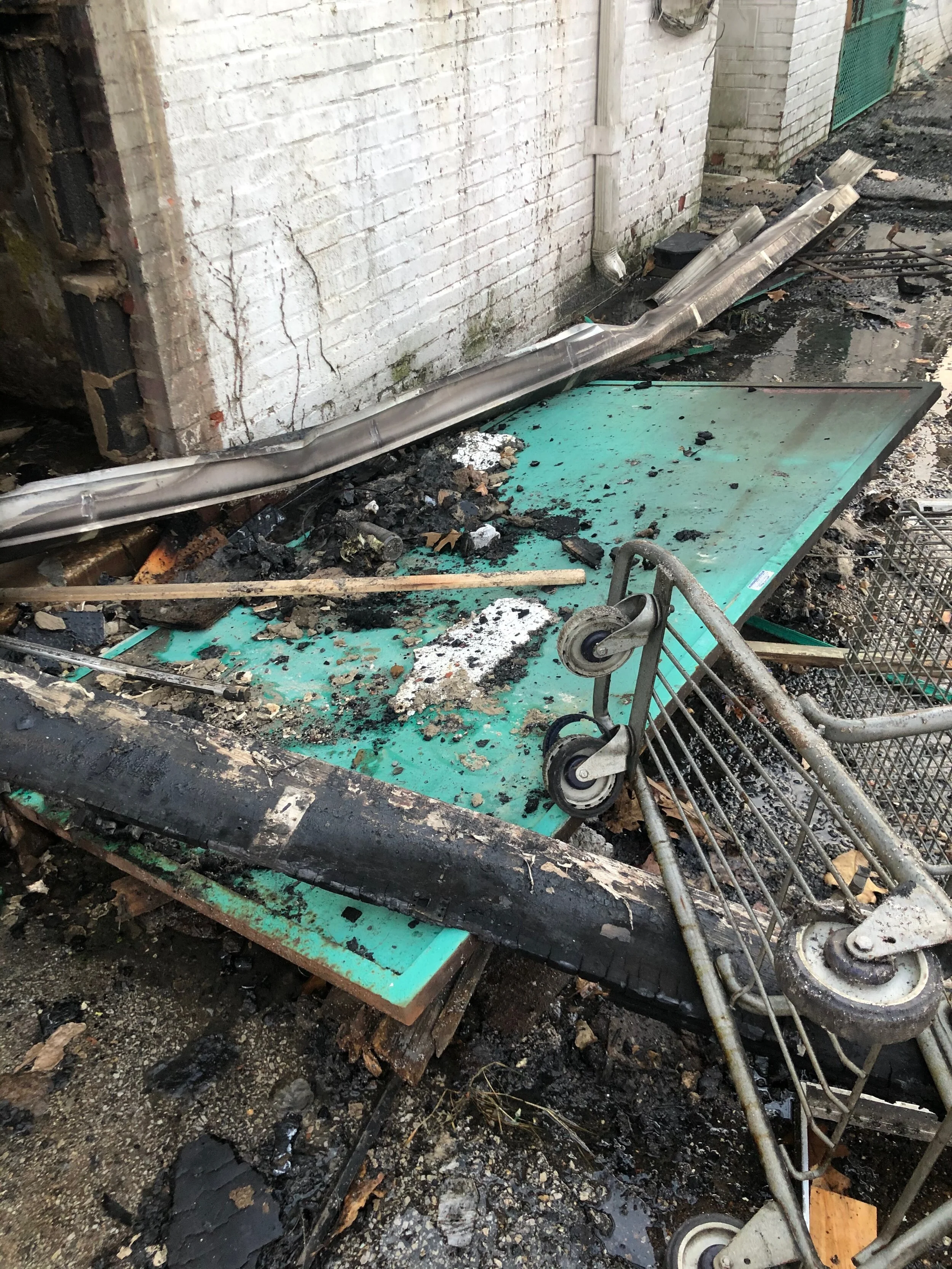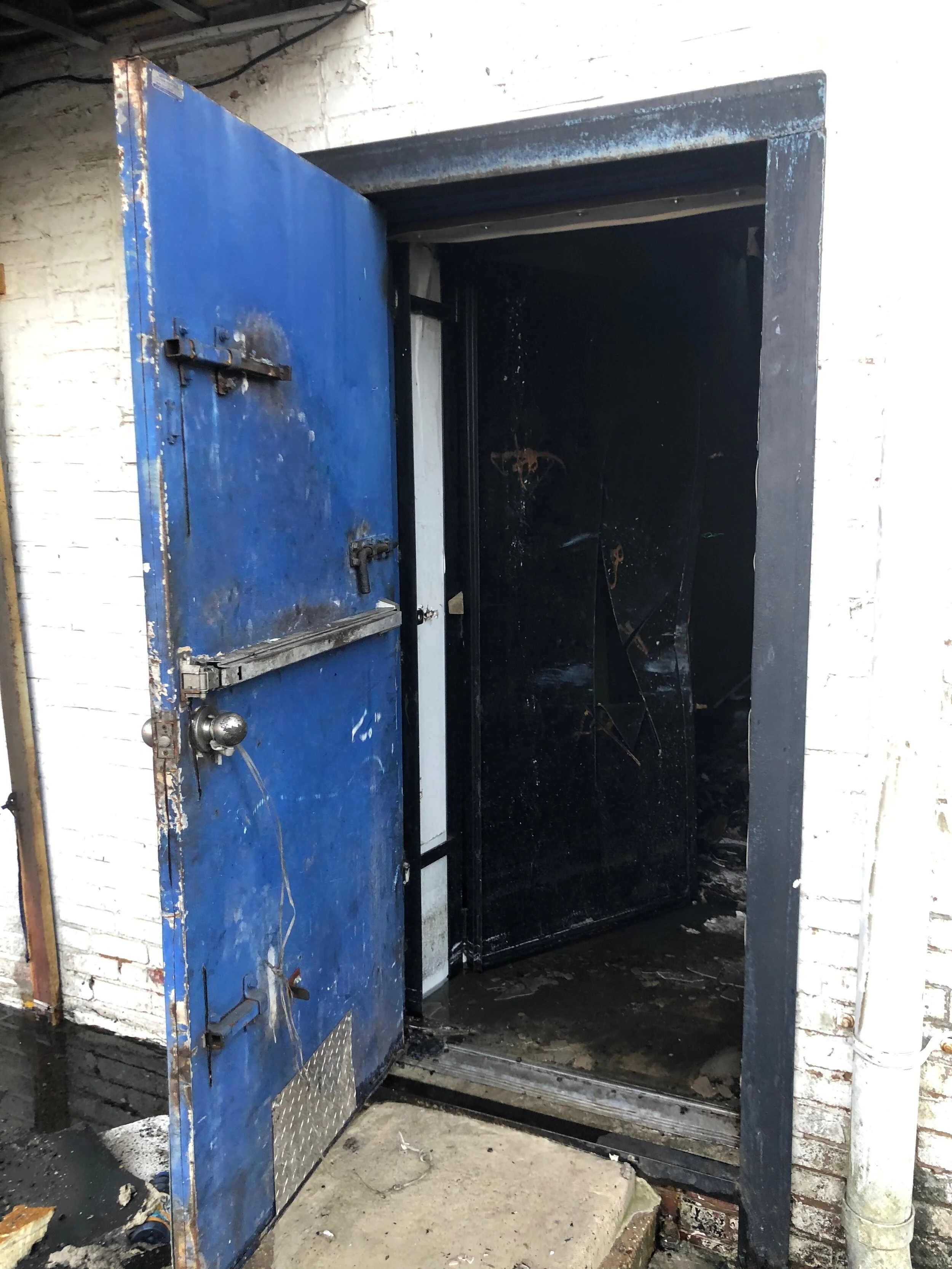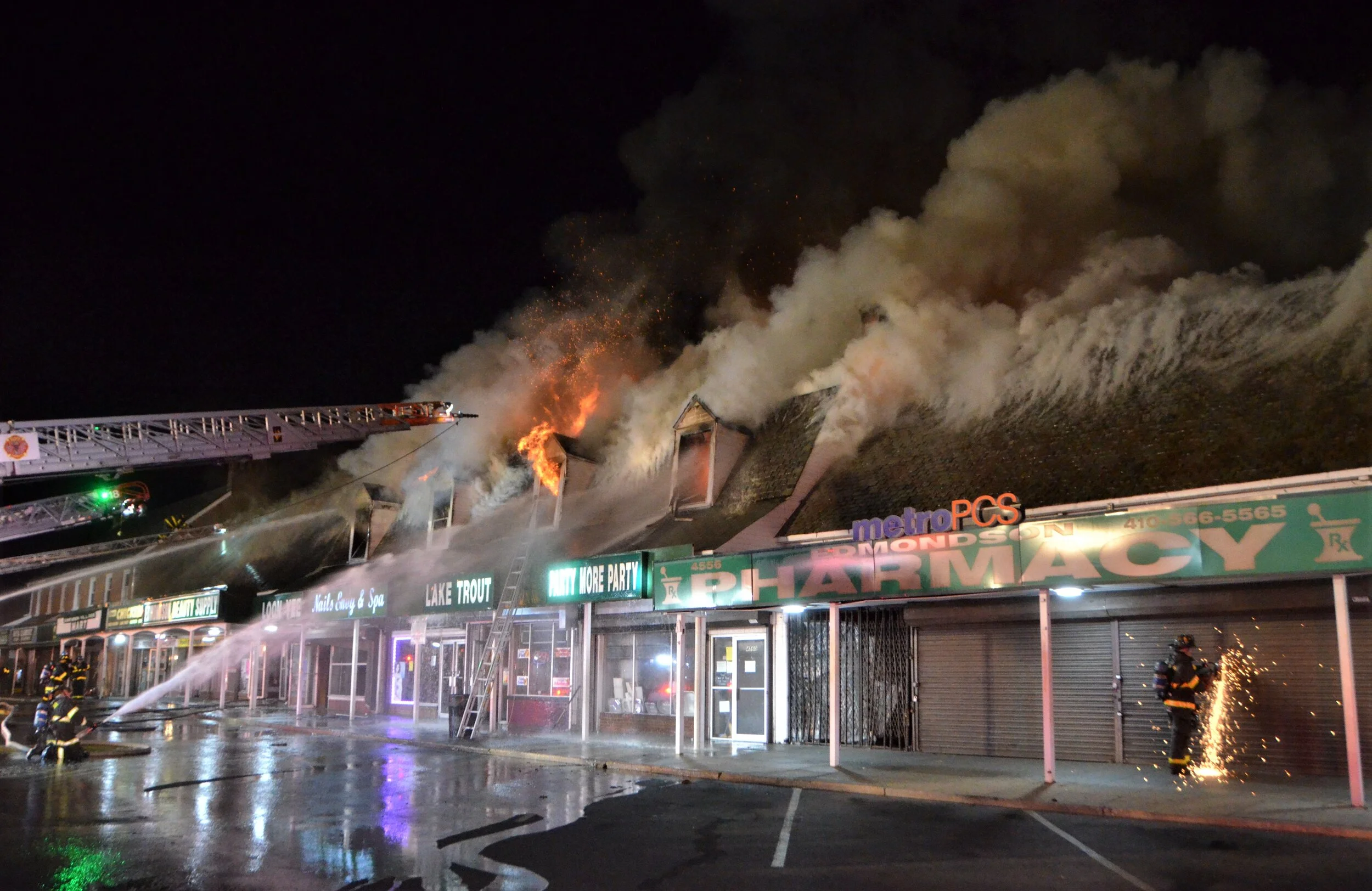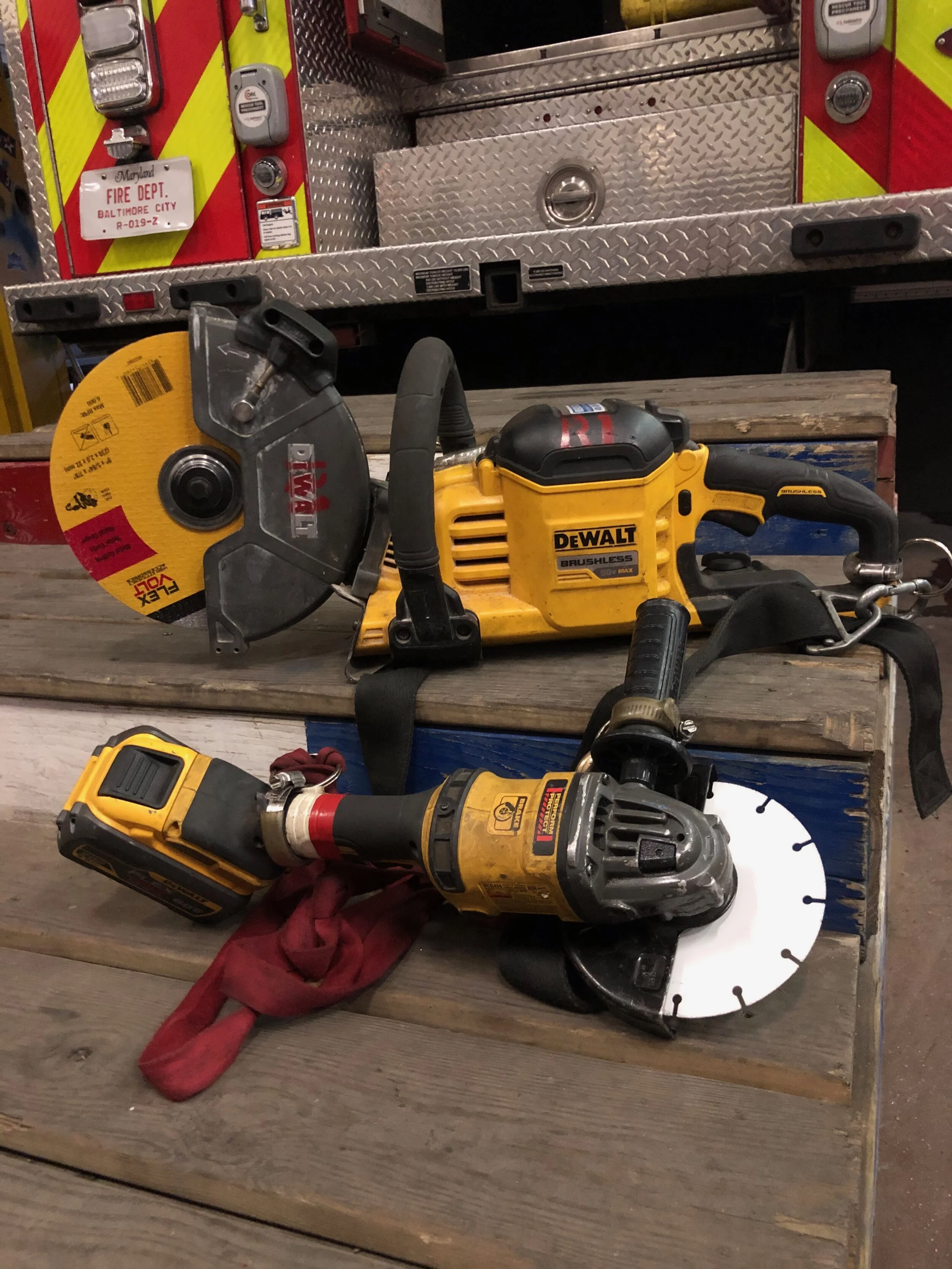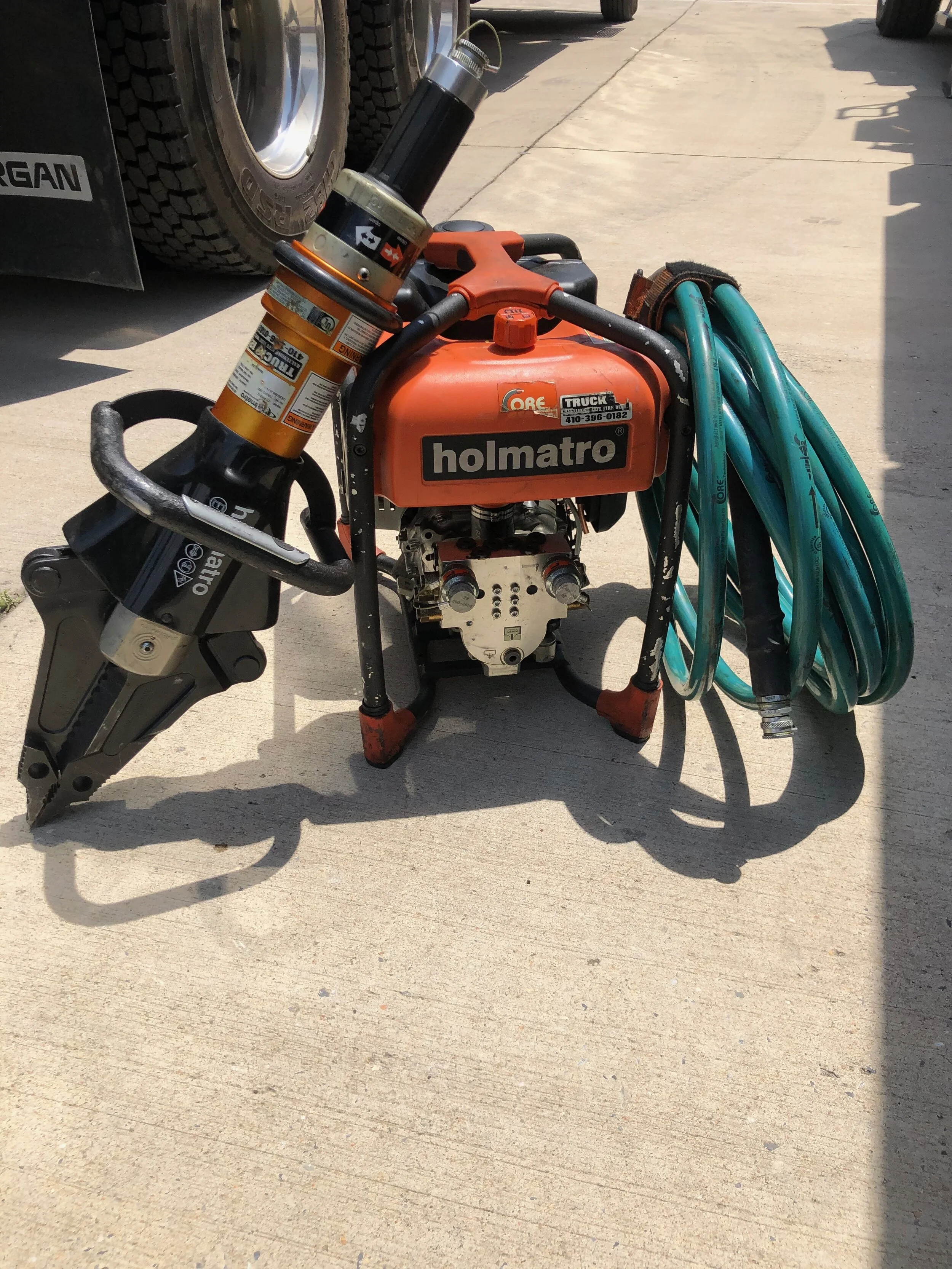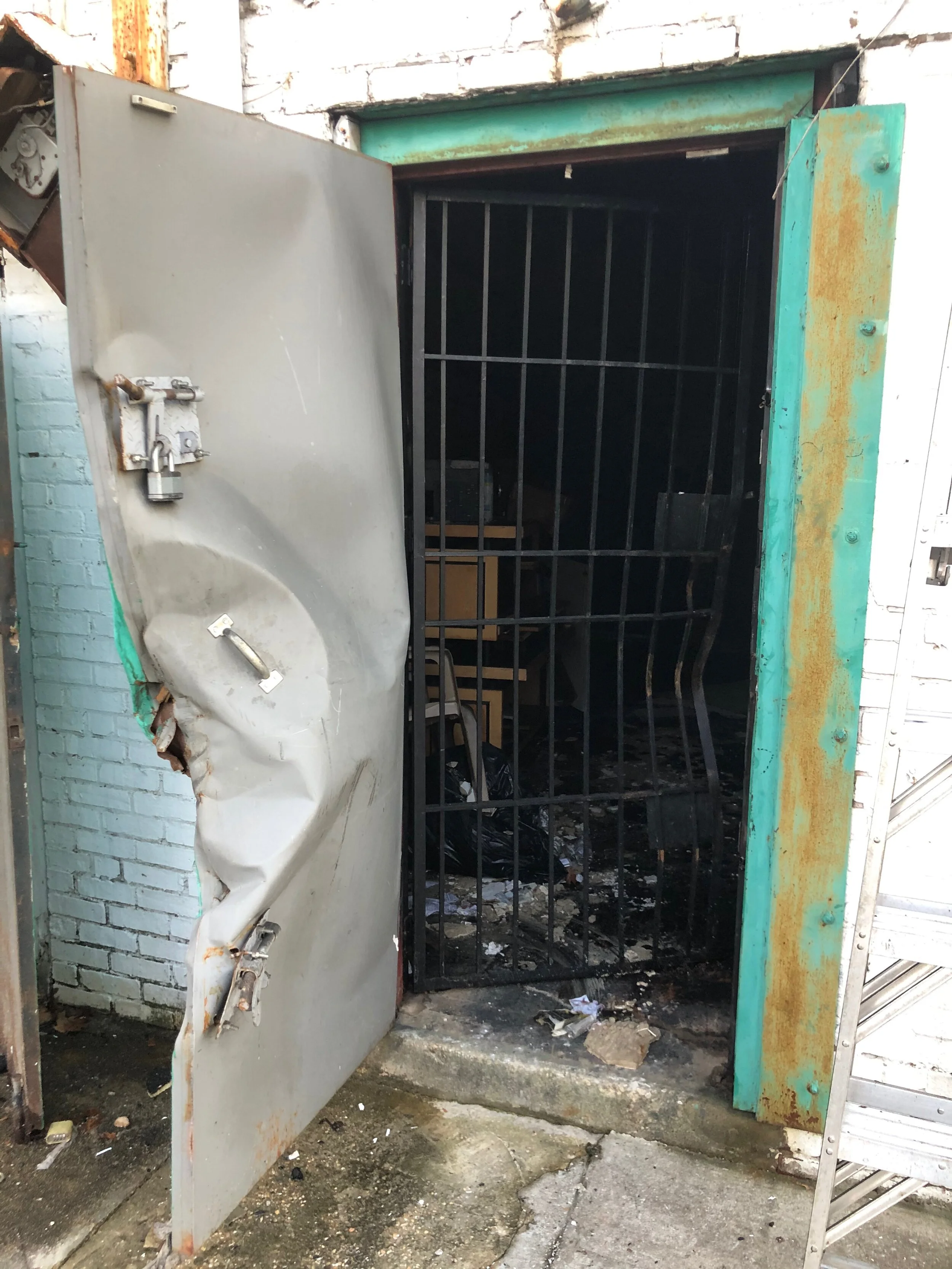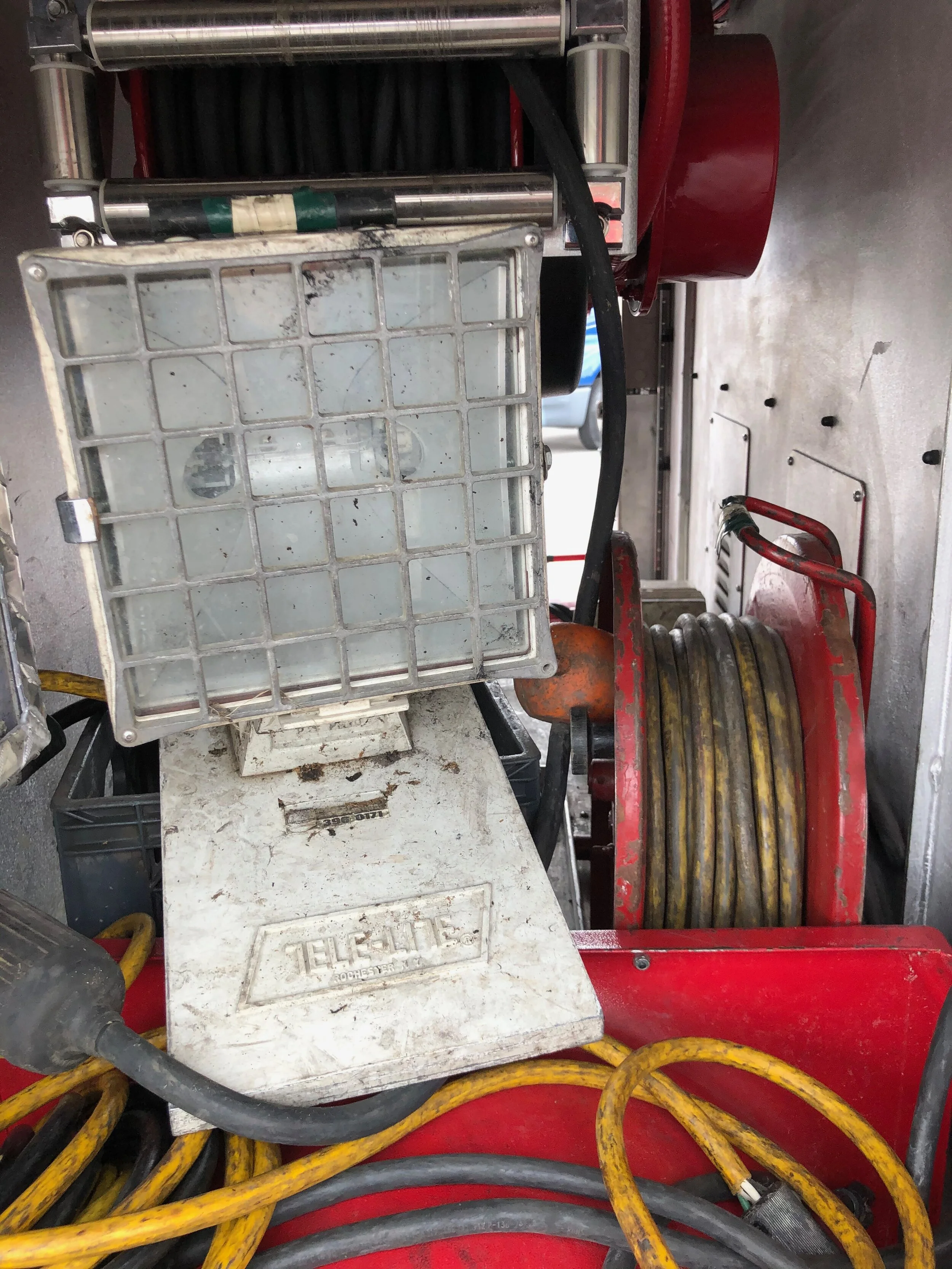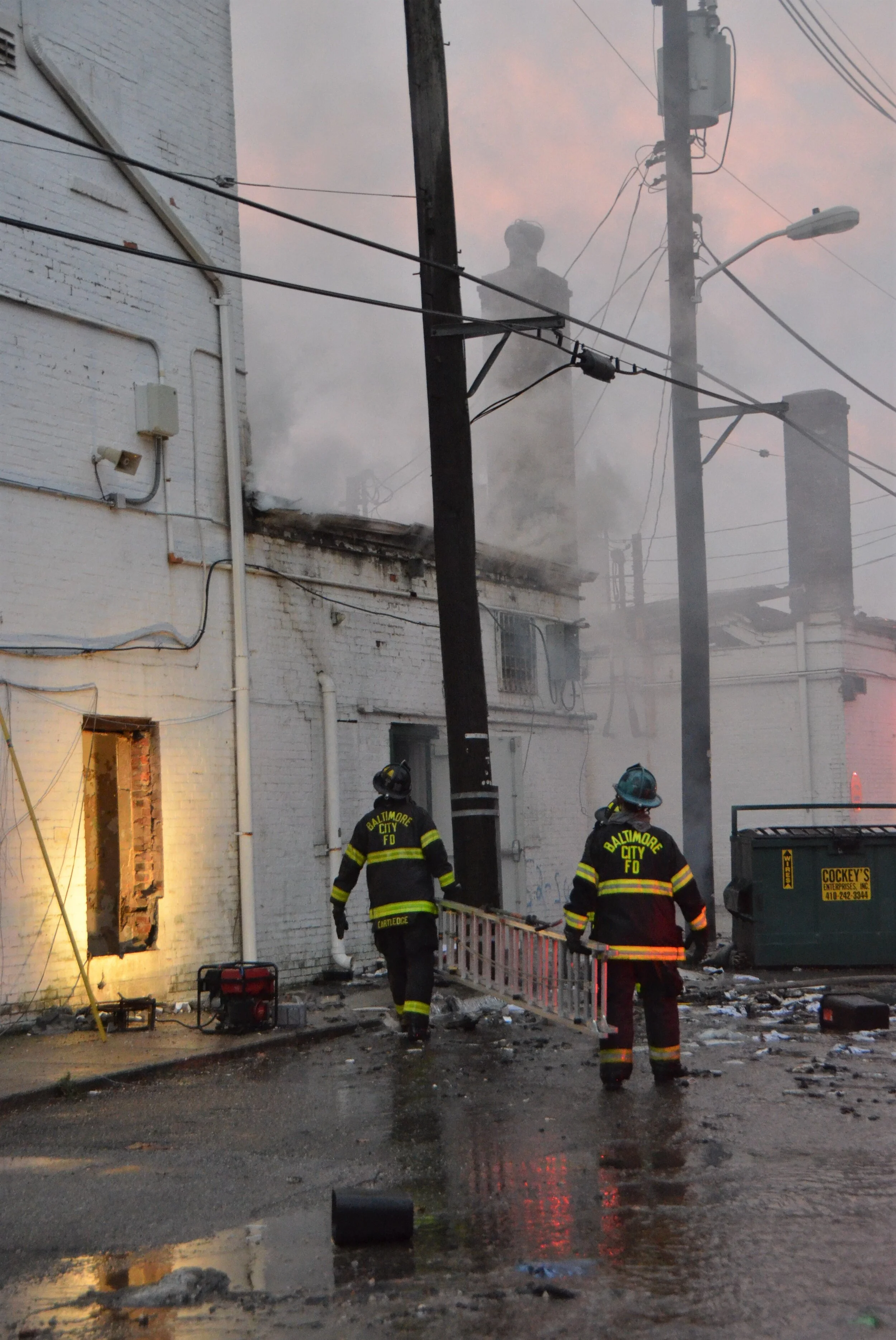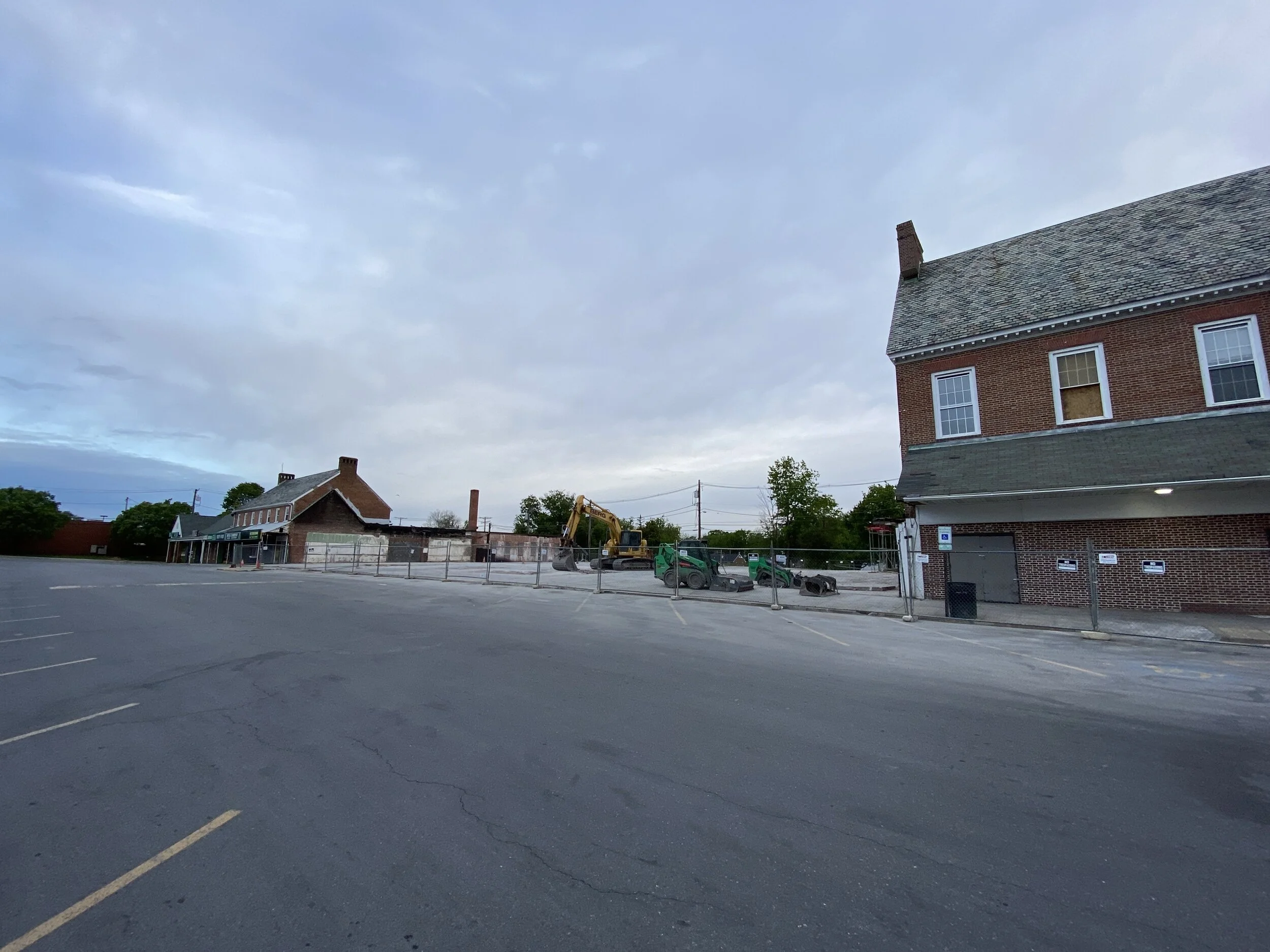Challenging 3-Alarm Fire At Historic Shopping Center
On Friday, November 22, 2019 at approximately 12:30 a.m., a tactical box was struck to investigate the report of smoke from the 4500 block of Edmondson Avenue. The alarm sent two engine companies and a truck company, which on arrival had smoke showing from the roof line above several stores in the Edmondson Village Shopping Center in west Baltimore. Box Alarm 53-1 was then transmitted for a working fire. This would be the 5th fire to hit the shopping center over its lifetime located in the famous Edmondson Village corridor.
Initially, first-alarm companies found fire in the duct work of a carry-out store after removing several roof vents. However, upon further inspection members found fire communicating across the front gable roof, which spanned multiple storefronts. Behind the gable roofs was a common flat roof (cockloft), which spanned the remaining length of the stores to side charlie. Soon after, heavy smoke and fire was showing from the roof lines of 9 storefronts.
It would take nearly 10 hours for the three-alarm blaze to be brought under control, resulting in no injuries to firefighters or civilians. A total of 9 businesses were damaged. The FD was unable to determine the cause of the fire.(Picture #1)
Historical Note:
The Edmondson Village Shopping Center was constructed in 1947 and was the first retail space in Baltimore designed with suburban shoppers and their vehicles in mind. It is an oblong Colonial Revival red brick complex constructed to look like a row of different buildings strung together. The shopping center originally housed 29 shops, sat on 10 acres and could handle 500-600 automobiles.(Pictures #2, #3)
Since its opening in May 1947, it suffered several fires:- November 1963: 6-alarm fire, which destroyed the same group of stores as this fire. - June 1987: 4-alarm fire in the mid-section of the shopping center.- September 1990: 2-alarm fire.- September 2008: 4-alarm fire with a major wall collapse.(Picture #4)
Operations - Side Alpha
First alarm companies immediately went to work upon arrival: stretching lines, throwing portable ladders, raising aerials to the roof and covering both the front and rear of the storefronts involved. Smoke conditions began to intensify along the roof lines of the stores, “Loon Yee” (carry-out store) and “Edmondson Beauty Supply”. Members from Truck 8, Truck 18 and Rescue 1 began forcible entry operations on side alpha and found no fire on the 1st floor of either store. However, they quickly re-focused their efforts on opening up the ceilings above them with a series of inspection holes where they discovered fire overhead in both stores. (The value of carrying an 8’ hook cannot be overstated here due to the increased ceiling height (10 feet) of commercial buildings - this is a tip the author learned from Mike Ciampo, FDNY).
Handlines were now operating in both stores but the process of opening the ceilings was arduous. Multiple ceilings were present and the final ceiling covering the cockloft was made of plaster with mesh reinforcement. (Picture #5) The process of getting large access holes for extinguishment was difficult. Fire conditions began to worsen and was extending towards the rear of the storefronts as well as the neighboring exposures.
Meanwhile, the members assigned to the roof from Truck 8 and Truck 18 had cut ventilation holes in two separate sections of the front gable and also reported fire extending laterally. At this point, the Acting Battalion Chief of the 3rd Battalion requested two additional truck companies. Fire then started to become visible in the windows of the dormer on side alpha and the roofline of the beauty supply store. A second alarm was transmitted. Roughly fifteen minutes later, exterior operations were ordered due to heavy fire conditions and the third alarm was transmitted.(Pictures #6, #7, #8)
Operations - Side Charlie
The storefronts were approximately 75’ deep and one-story in height. The fire would eventually extend to the rear of all 9 stores and large sections of the roof collapsed into the stores. At one point, an explosion occurred at the rear of the storefronts due to a natural gas line being severed when a section of roof collapsed into the building (this ultimately required the gas company to dig up the street in order to shut down the 4” gas line and delayed extinguishment).
Conditions on side charlie (rear) were drastically different from side alpha (front). Members operated in punishing smoke conditions that were blowing straight back from side alpha.(Picture #9) At times members were forced to operate on air. This made forcing entry into the rear of the storefronts extremely challenging. Truck Companies 10, 16, 23 and Rescue 1 were all operating in the rear and faced a number of different forcible entry scenarios: from doors welded shut together, too forcing multiple consecutive doors in a row to gain full access. Members would encounter an outward swinging metal door with an assortment of drop bars, followed then by a steel screened security door to allow for ventilation (outward swinging) and finally a third door that was inward swinging.(Pictures #10, #11) Thanks to the ingenuity and teamwork by the members, rear access was made to all 9 stores and handlines were able to be put into service.
Operations - Delta Exposure
The fire was eventually knocked down by multiple master streams from companies operating on the alpha and charlie sides. Additional help came from the two 2.5 story buildings located at each end of the burning row of storefronts. These buildings had large brick party walls that butted up to the burning storefronts and acted as natural fire breaks, stopping any further spread of the fire.(Picture #12) Companies were sent into these exposures to check for possible extension through the brick party walls. In the delta exposure, fire extension was found in two locations: in the mid-section of the brick party wall on the second floor and in the interior stairwell located at charlie/bravo corner of the building. Truck 23, who reported the extension, transmitted additional reports that the 2nd floor was a large open commercial space and had a heavy smoke condition. Rescue 1 was then directed to create access/egress points in the building to assist members operating on the second floor and in the rear stairwell. Companies operated without incident, making short work of the extension issues and remained in place until the fire was declared under control.
Examining Some Challenges at this Fire
Challenge #1 - Side Alpha
One of the first problems firefighters encountered was the overwhelming task of forcing entry into the 9 storefronts. The rapid fire spread made this task an immediate priority and required multiple truck companies. Conventional forcible entry techniques worked well on the alpha side due to light smoke conditions, adequate scene lighting and the close proximity to apparatus to get hand tools and gas powered saws. Members encountered a number of roll- down gates, mortise lock commercial front doors and even a scissor gate.(Picture #13) However, gas powered cut-off saws soon became a premium. Rescue 1 responded on the initial box alarm and on arrival deployed their new battery powered tools: DeWalt 60V 4.5”-6” Grinder & DeWalt 60V 9” Cut-off Saw. The portability, lighter weight and ability to operate in smoke were key advantages in using these tools at this fire.(Picture #14)
Challenge #2 - Side Charlie (Picture #15)The difficulty of forcing a rear commercial door is well known to firefighters. As
mentioned above, companies operating on side charlie were faced with heavy smoke conditions at street level and at times required to go on air, which limited visibility and the ability to communicate effectively. Also, gas powered cut-off saws were of limited use due to the choking smoke conditions. This forced the members to resort to unconventional forcible entry techniques but with great success and efficiency. In the guise of “work smarter, not harder”, the members of Truck 10, 16 and 23 pulled off their portable holmatro pumps and combi tool (which has the capability to spread, cut and squeeze) and began to make immediate headway on gapping and forcing the rear doors of the storefronts.(Pictures #16, #17) Efforts were reinforced further when Truck 10 deployed their DeWalt 60V Grinder and Truck 16 with their DeWalt 60V 9” cut-off saw. The battery powered tools assisted in the removal of the steel screened security doors (described above), which were located just inside the doorway of the outward opening rear door.(Pictures #18, #19)
Challenge #3 - Delta Exposure
When the order was given to Truck 23 (refer to the above) to check the delta exposure for fire extension a number of hazards presented themselves to the members:- Access to the 2nd floor from street level was limited to side charlie only.- The 2nd floor was a large vacant commercial space that was under renovation and spanned
roughly 2,000 plus square feet in dimension.
Members initially accessed the building via a stairwell in the charlie/delta corner. The problem soon became apparent, the party wall they needed to check for extension was on the complete opposite side of the building, side bravo. Truck 23, therefore, had to search across a large open floor plan with a heavy smoke condition. The concerns for the potential of members getting lost or disoriented was immediately conveyed. An old school trick was deployed to help the members navigate in the smoke, which was deploying a 200’ electrical cord reel with portable lights from the exterior up through the interior stairwell and onto the 2nd floor landing. The portable lights helped illuminate/indicate the stairwell location on the 2nd floor and the cord reel provides a direct, tangible line to direct members in and out of the building.(Picture #20) It is also important to stress the use of the Thermal Imaging Camera (TIC). The members of Truck 23 would later report a key factor in being able to stay oriented and operate on the second floor was in large part to the TIC. Finally, Rescue 1 and Truck 23 performed a wall breach (using the DeWalt 60V 9” cut-off saw) that accessed a second stairwell located on side charlie. The operational benefit was the location of the stairwell, which was in the charlie/bravo corner.(Picture #21) Companies were then able to stretch directly to the bravo side party wall where the fire extension was located and complete extinguishment.
The members operating on this fire faced a number of unique challenges due to both environmental and human factors. It is the intent of this article to show the resilience of the members and how conventional and unconventional tools & tactics have a place in today’s modern fireground.
(Picture #22)
About the author...
Firefighter Jerry Smith Jr is a 16-year member of the BCFD. He is assigned to Rescue 1.




